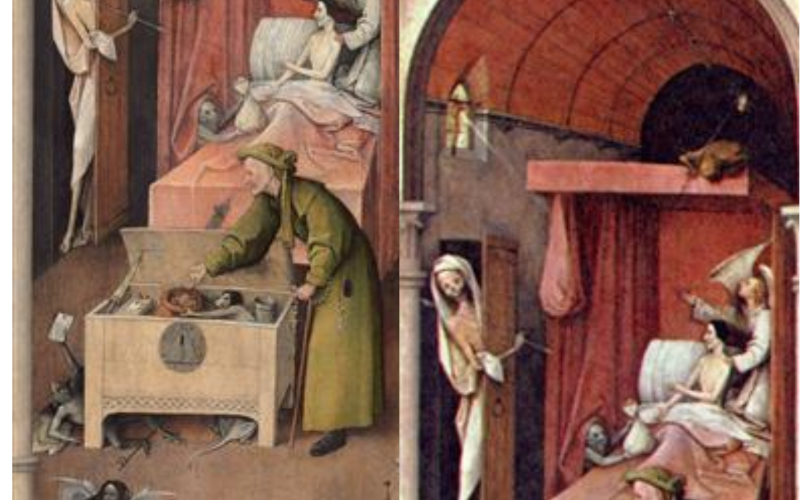A painting by Hieronymus Bosch is titled Death and the Miser. Currently, it can be found in Washington, D.C.’s National Gallery of Art.
A divided triptych’s interior right panel contains the painting. The Ship of Fools and Allegory of Gluttony and Lust are the other parts of the triptych that are still in existence, while The Wayfarer was painted on the external right panel.
The memento mori genre of art includes pieces like Death and the Miser that serve as a constant reminder of the inevitable nature of death.
In order to assist Christians choose Christ over sinful pleasures, popular 15th-century handbooks on the art of dying (Ars moriendi) had a significant effect on the picture.
Even when an angel points to a crucifix from which a thin beam of light is projected, the miser, unable to withstand worldly temptations, lunges for the bag of riches presented by a demon as Death approaches.
The picture makes allusions to contradictory ways of living. The solitary (tiny) window in the room is adorned with a crucifix. The enormous space is black with a slender ray of light shining down to the bottom.
Overlooking the dying man, a demon carrying an ember waits for his moment. Death is clad in voluminous robes.

Bosch may be showing the miser in the foreground as he once was, in good health, holding his rosary and storing gold in his money chest (which is filled with demons).
Although his final battle must be fought naked, without arms or armor, he must wear symbols of worldly authority such as a helmet, sword, and shield to allude to earthly vanities and to the rank held by this man during his life.
For Flemish artists of the 17th century, using such still-life objects to represent worldly vanity, transience, or deterioration would develop into its own genre.
It is unclear if the miser will cling to his material wealth in his final moments or accept the salvation given by Christ.
In The Seven Deadly Sins and the Four Last Things, the top left roundel showing a sinner’s death demonstrates Bosch’s acquaintance with the Ars Moriendi visual tradition.
Numerous similarities exist, including the presence of Death and the opposition of an angel and a devil at the headboard.


